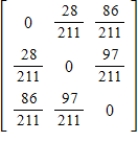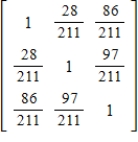A man owns an Audi, a Ford, and a VW. He drives every day and never drives the same car two days in a row. These are the probabilities that he drives each of the other cars the next day:
Pr(Ford after Audi) =  Pr(VW after Audi) =
Pr(VW after Audi) =  Pr(Audi after Ford) =
Pr(Audi after Ford) =  Pr(VW after Ford) =
Pr(VW after Ford) =  Pr(Audi after VW) =
Pr(Audi after VW) =  Pr(Ford after VW) =
Pr(Ford after VW) = 
What is the steady-state vector for this problem?
A) 
B) 
C) 
D) 
E) 
Correct Answer:
Verified
Q165: A man owns an Audi, a Ford,
Q171: In a certain city, the Democratic, Republican,
Q172: Can the matrix Q173: A Markov chain has transition matrix Q174: The probability that daughters of a mother Q175: A local business A has two competitors, Q176: Find the steady-state vector associated with the Q177: Use the transition matrix Q178: Suppose a government study estimated that the Q179: Can the vector Unlock this Answer For Free Now! View this answer and more for free by performing one of the following actions Scan the QR code to install the App and get 2 free unlocks Unlock quizzes for free by uploading documents![]()
![]()
![]()

